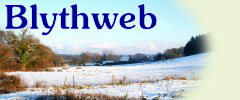A Mint at Blythburgh by Tom Gardner
There is, at present, no documentary or numismatic evidence of a mint at Blythburgh. However, according to the decrees of Aethelstan, no one is to coin money except in a port or burh. Now a burh is an entity known to the law and thus every burh should have a moneyer. The burh is essentially a stronghold, a place of refuge and probably with a military presence and with its own judicial administration and also an established market. In medieval latin, the word portus means a maritime port and the word porta means a doorway or entrance of some kind. Blythburgh was a burh and it also had a market with possibly foreign trading as far back as 8/9th Century, so a mint could have been justified, but coinage of this period has to bear the name of the moneyer who struck coins officially but not the actual name of the town or burh.
Kings of East Anglia from C. 750 to 870 are known to have issued silver coinage and also coins are known to have been struck in Danish East Anglia C. 885 – 915 but the names of the mints are not known since exchequer records did not exist. So, if indeed there was a mint, it must have been between 750 and 915. There is no record in Domesday of a mint or a moneyer for Blythburgh, but in the entry for Dunwich appears a very concise note (312B) ‘In the time of King Edward (the Confessor) there was not, there, a money exchanger (cambitor) but in Blythburgh’. It is by no means clear what the last part of the entry infers. Does it mean that in the time of Edward there is a money changer or there was a money changer? It seems very reasonable to suppose that had there been such an office in Blythburgh at the time of Domesday then the record would most certainly have included this valuable piece of information.
If then, we believe that there was not a money changer in Blythburgh at Domesday may one assume that there was one before the Conquest: that in Aethelstan’s time when a money changer (and a mint) would be quite acceptable? Be that as it may, there was the necessity for a money changer in Blythburgh to deal with the foreign trade, but for how long we cannot tell. What is quite clear is that there was not a mint at Blythburgh or Dunwich after the mid–eleventh century when royal mints were very effectively established in every borough and were recorded at the exchequer. The two silver pence found in Blythburgh belong to Danish East Anglia – St Edmund's memorial coinage of about 885 – 915 and struck by the moneyers Adradus and Risleca.
Tom Gardner, Reydon, March 1996
Back to the History Index
Some Favourite Websites For December 2025:
The Southwold Railway Trust Shop – For all sorts of quirky souvenirs of the Southwold Railway
The Southwold Railway shop fully supports the Southwold Railway, it's Trust and the Steamworks attraction in Southwold. The Southwold Railway was a 3ft gauge line running 9 miles between Halesworth and Southwold. The Trust was formed in 1994
Singtong Neeyom Thai Restaurant – Delicious authentic Thai Cuisine
Take a look at Singtong Neeyom Thai Restaurant in the centre of Halesworth, for a range of delicious and skillfully prepared Thai dishes created by their own native Thai, Piek.
The Halesworth Pet Store – Specialists in Animal Nutrition and Pet Care
Visit our shop or take advantage of our Free Local Delivery Service! We are experts in animal nutrition, catering for all quantities – from small bags to bulk deliveries amd we are happy to help with all of your requirements
Valley Farm – A large family farmhouse in Walberswick
A Grade II listed farmhouse for up to 11, plus 2 cots, with amazing views across the marshes to the sea.
Stoneware Birds – Life-sized handmade and unique British birds, now available to buy online.
A charming unique gift or a treat for oneself. See the website to know how each one is made. Now available to buy online. Each bird is an individual creation, varying in choice from the perky wren to the plump bullfinch together with other well-loved British birds. Which will you choose?
